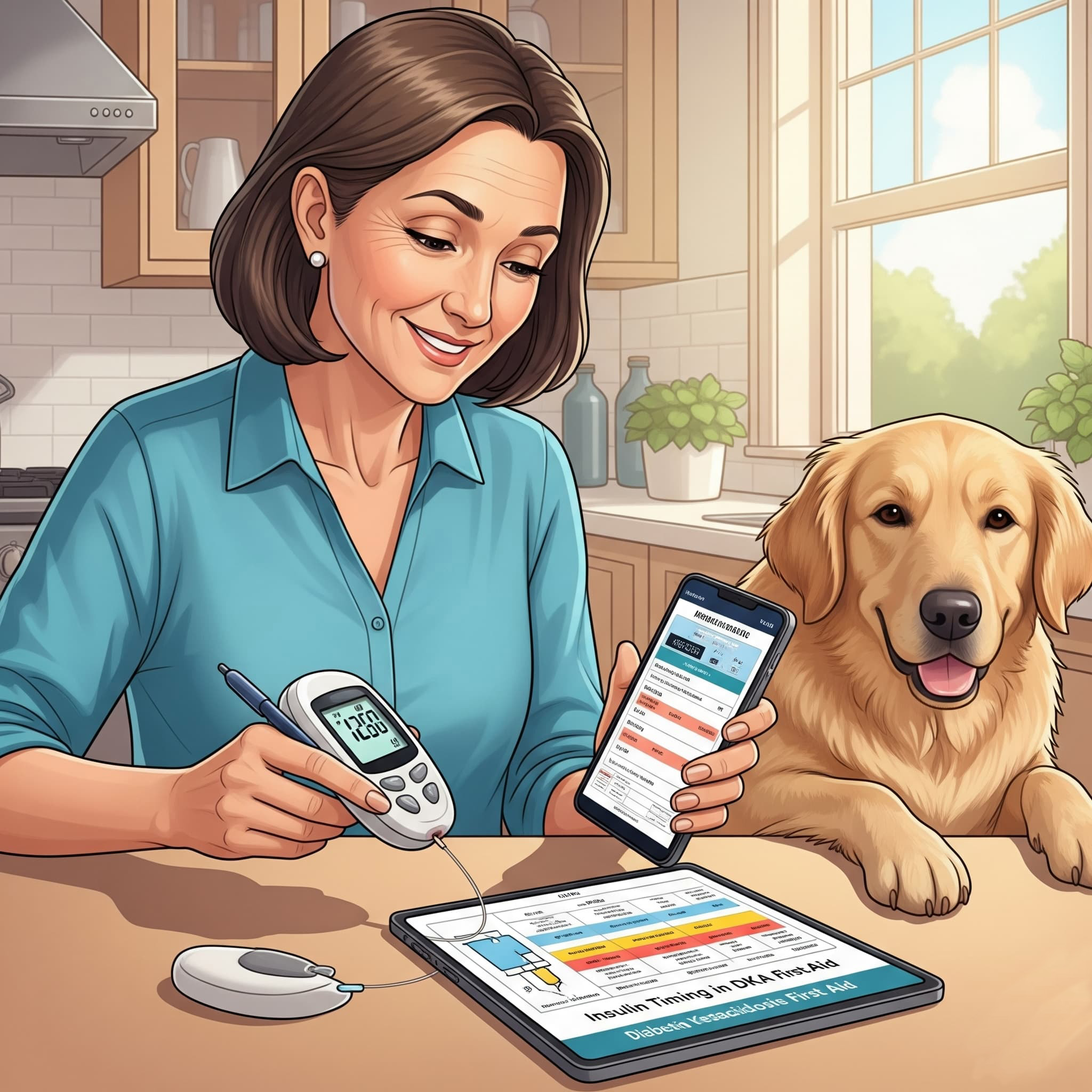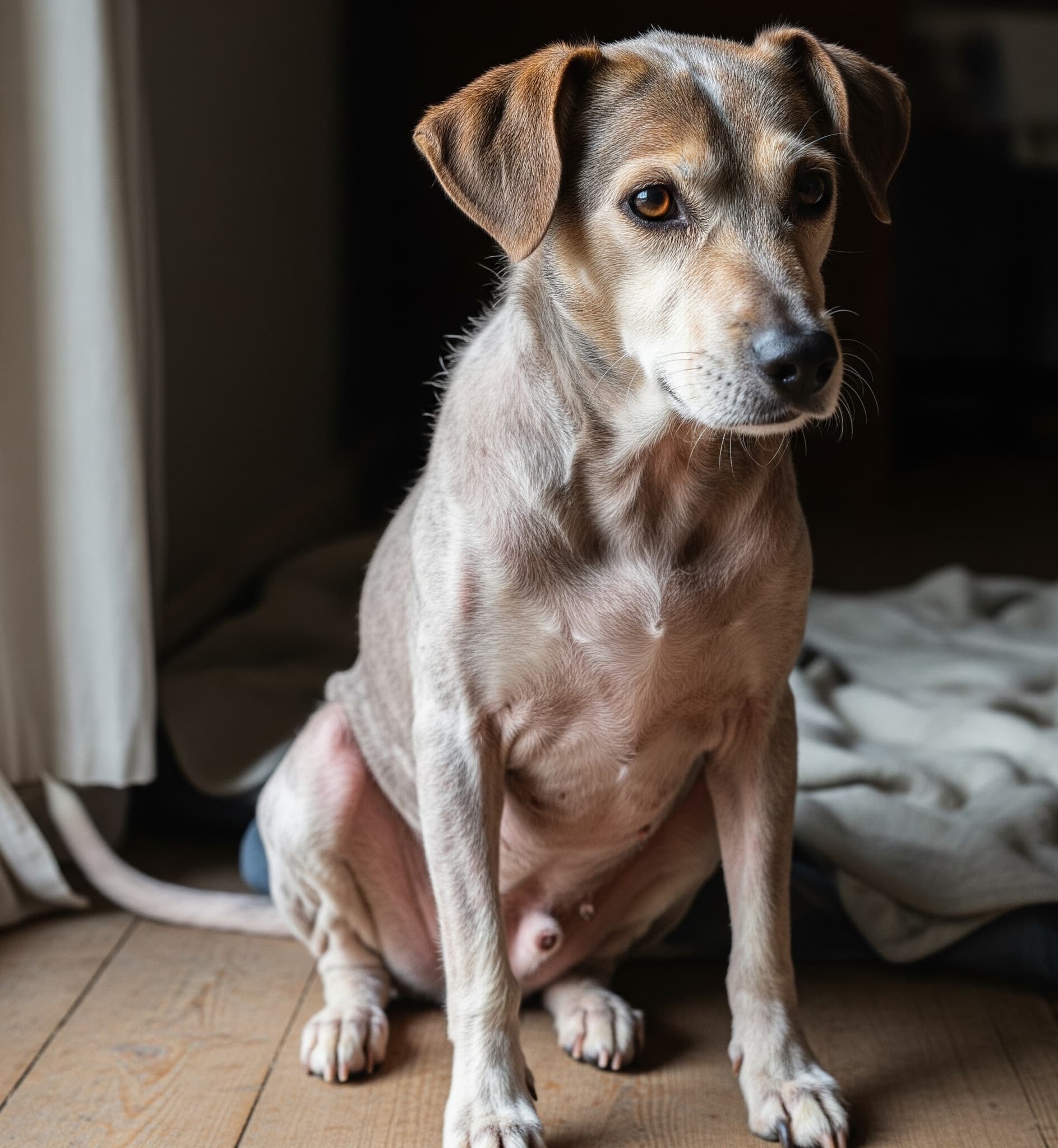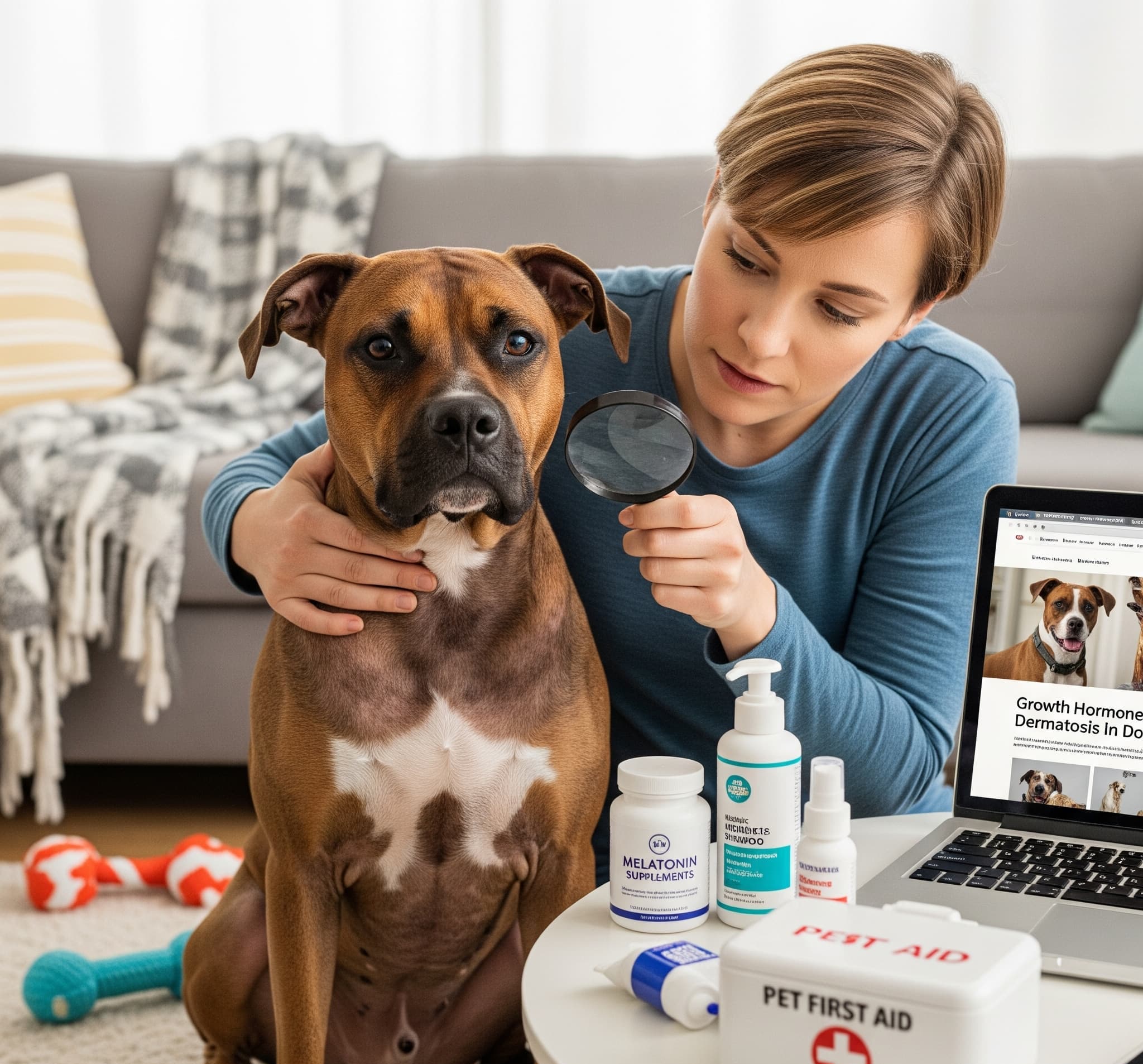New Dog Owners: Understanding Insulin Timing Essentials for DKA First-Aid
New dog owners, discover the critical timing for insulin shots during DKA and protect your pet in a crisis. Read quickly and be ready to act!
Introduction
Imagine coming home from a long day, only to notice that your dog is unusually quiet. Instead of chasing the ball, she is lying in one spot, panting, and gulping water like the bowl is empty. Seconds later, your veterinarian tells you the chilling news: diabetic ketoacidosis, or DKA. For first-time owners this diagnosis can feel paralyzing. Yet grasping how, when, and why to give insulin in such a situation turns panic into purpose. Knowing that single detail could literally improve, or even save, your companion’s chance of recovery.
To make it easier for you to work through this lengthy guide and zero in on the topics that matter most, weve grouped the material into a few big sections you can skim:
- What Is DKA and Why Does Timing Matter
- Spotting DKA Signs Early
- First Steps Before Insulin
- Giving Insulin the Right Way
- Common Questions Answered
What Is DKA and Why Does Timing Matter
So, what are we really talking about here? DKA, or diabetic ketoacidosis, pops up when your dogs body is short on insulin. Insulin is the hormone that lets cells grab sugar and turn it into energy. Without enough of it, the body starts burning fat instead. That process dumps ketones into the bloodstream. When ketone levels climb, the blood becomes too acidic. All sorts of trouble follows: the dog gets dehydrated, electrolytes get out of whack, and organs can start to fail.
Thats why the timing of insulin is everything. Picture baking a cake. If you throw in the eggs before the flour rises, the batter never sets. Give insulin too fast in DKA, potassium can drop suddenly and that can scare the heart. On the flip side, if you wait too long, acidosis deepens and the dog suffers more. Vets recommend starting with fluids to replace lost water and steady electrolytes, then adding insulin. Research shows that if insulin begins within about six hours of good fluid balance, DKA usually clears quicker.
For new dog owners, a diagnosis of diabetic ketoacidosis (DKA) usually means an urgent trip to the veterinary ER. Please do not attempt to manage this condition at home, as its severity can change within hours. Still, knowing what to look for will help you ask sensible questions and feel like part of the team working to save your pup.
I remember one case all too well. The dog arrived comatose, a telltale citrus odor streaming from its mouth. The owners had hesitated overnight, thinking he was merely tired from play. A swift injection of fluids and carefully timed insulin turned him around, but the lost time haunted everyone. Your awareness can make that kind of difference.
Spotting DKA signs early
Ever wonder whether your dog is just a bit lazy or dangerously ill? DKA is the kind of trouble that creeps in under the radar. Watch for these red flags: excessive thirst and urination, called polydipsia and polyuria; weight loss even though your dog is ravenous; vomiting or diarrhea; observable weakness; and the unmistakable sweet, fruity scent on the breath.
Each one of these signs shouts emergency. DKA strikes dogs with untreated diabetes and can be kicked loose by stress, infection, or even a thunderstorm. Yet DKA is more common in breeds that seem wired for it, such as miniature schnauzers and standard poodles, so new owners in those households should inspect their companions daily.
Catching the trouble early opens the door to better timing for treatment. Insulin works only when blood glucose, ketones, and acid levels are evaluated by a professional. Get to the clinic, where staff will test those numbers. A glucose reading over 250 mg/dL, combined with measurable ketones, usually seals the diagnosis.
Most pet owners know the dread that settles in when a dog is clearly unwell. Yet, picking up the warning signs early restores a measure of control and hands the veterinarian the breathing room needed to start treatment. In cases of diabetic ketoacidosis (DKA), that action usually begins long before insulin is ever drawn up.
First Steps Before Insulin
Insulin, while critical, is not the first tool lifted from the kit. Severely dehydrated animals lose explore five to ten liters of fluid-roughly the volume of a household bucket-and intravenous saline is needed to replace it quickly. Electrolytes must be watched, too. Potassium readings may appear reassuringly high at first, masking a deficit that lurks inside the tissues. Because insulin drives potassium back into the cells, the hidden shortage can produce dangerous heart rhythm problems. For that reason, many clinics hold off on the hormone until potassium sits in the narrow range of 3.3 to 3.5 mEq/L. Phosphate and magnesium may also need correction, and acidosis normally begins to resolve once dehydration is tackled; sodium bicarbonate is rarely required unless the situation is extreme.
Putting all these pieces in place usually takes one to two hours, sometimes longer, and it can feel frustratingly slow to anxious pet parents. Still, that careful groundwork ensures the later insulin run is both effective and safe. Think of it as preparing a garden: first water the soil, add the missing nutrients, and only then settle the seeds into life-giving ground. Skipping any of those steps invites shallow roots and wasted effort.
Giving Insulin the Right Way
Now we get to the heart of the treatment-insulin therapy. In the clinic, veterinarians typically reach for short-acting regular insulin. It can be delivered either as a constant-rate infusion (CRI) or through intramuscular injections, depending on how sick the patient looks.
When using a CRI, the insulin is diluted in saline and the drip rate is set at 0.1 units per kilogram per hour. Blood glucose is checked every hour, and the rate is adjusted according to the number on the meter. Should the sugar level drop below 250 mg per deciliter, dextrose is added to the fluids to keep the curve flat while the insulin works on the ketones.
If the team chooses the intramuscular route instead, small doses-one or two units every hour-are given until the animal stabilizes; at that point, the injections can be switched to a subcutaneous form.
Timing matters. Insulin starts only after any fluid deficits are corrected and potassium levels are normal, usually within six hours of arrival. Therapy continues until ketones disappear and the dog resumes eating.
For new owners, there will be a time when you help manage the insulin at home, but during active DKA, only a veterinary hospital can keep the situation under control. Learning from the team now will help you avoid rebound episodes later.
Trust the process-it works. Owners routinely leave the clinic impressed by how quickly they grasped the steps.
Common Questions Answered
Can I give insulin at home during DKA?
Absolutely not. DKA is a veterinary emergency, and insulin at home suits only stable cases of diabetes. Administering it at the wrong time can do more harm than good.
How long until my dog improves?
With prompt and correct care, most dogs start to brighten within twenty-four to seventy-two hours. That said, you still need to keep an eye out for lows or other complications along the way.
What happens when potassium drops?
Before giving insulin, raise potassium. Doing so cuts the risk of heart problems.
Is diabetic ketoacidosis DKA avoidable?
Absolutely. Check blood sugar at home, give insulin on schedule, and keep up with vet visits.
Which breeds are at greater risk?
Small breeds, especially terriers, show up often, yet any dog can develop DKA.
Conclusion
That was a quick dive. DKA is serious, but mastering insulin timing turns anxious owners into calm caregivers. Spot early signs, keep an eye on fluids, and check potassium first. Done right, those steps protect lives.
Ready to safeguard your dog? Call your vet today. If this helped, please share it or tell your story in the comments below.




Post Comment